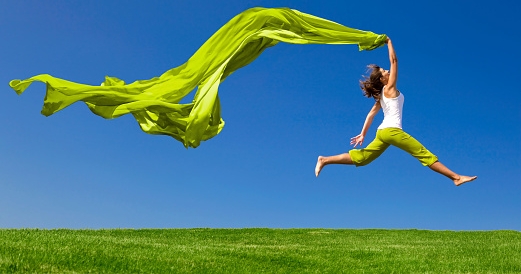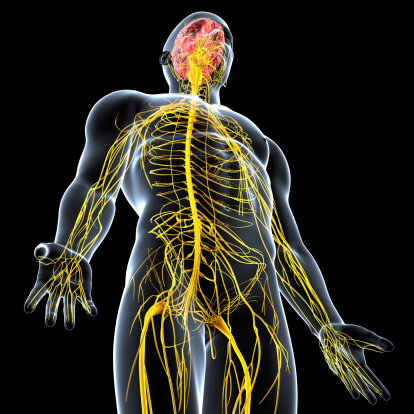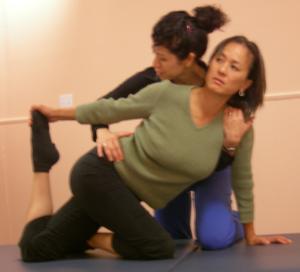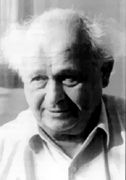
Developed by Dr. Moshe Feldenkrais, this method can help anyone improve their coordination, posture, balance and ease of movement. The Feldenkrais Method is a physically oriented educational process, more akin to learning to play an instrument or learning a new language.
This method addresses deep neurological habits and movement blindspots that are unfelt and out of our awareness. Habits that lead to stiffness, limited mobility and poor coordination can make us feel older and weaker.
When our coordination improves, we enjoy the way we move and reduce loss of mobility as we age.
What the Feldenkrais Method is Not
- It is not like Yoga or Pilates.
- It is not like massage or bodywork
- It is not like Physical Therapy.
- It is not like Tai Chi or Qi Gong
- It is not like Zumba
- It is not exercise, as it goes beyond stretching and strengthening.
The Feldenkrais Method addresses deep neurological habits that can lead to movement limitations, pain and stress.
The Feldenkrais Method can help us learn to organize and coordinate our movements with minimum effort and maximum efficiency, not through increased strength but through increased awareness of our senses through movement.
OUR BRAIN
All of our physical movements are organized and coordinated by our brain. Our brains and bodies work together as a system and are in constant communication.
Our brains can develop habits of thought, posture and movement unconsciously. Some habits are useful, - helping us thrive. Other unconscious movement habits can contribute to lack of coordination, limited mobility and pain.
HOW DOES OUR NERVOUS SYSTEM FUNCTION?
Our autonomic nervous system shifts between, The Sympathetic State; preparing us for action, protection, flight, flight, freeze, and The Parasympatheric State; a restorative state, allowing us to ; sleep, rest, digest and learn as we process new sensory information more deeply
WHAT IS THE SENSORY MOTOR SYSTEM?
A network of nerves with two pathways: The Sensory Nerve Pathway and the Motor Pathway.
One pathway gathers sensory information (visual, auditory, kinesthetic, etc) and sends it to the brain. The other pathway directs motion from the brain to the body. The two are in constant communication
The Sensory Nerve Pathway feeds our brain information; kinesthetic,visual, hearing, smell, taste, temperature, skin sensations and joint placement.
Kinesthetic Awareness tells us how we are posturing ourselves, how tight or relaxed our muscles are, how we're organizing our bones in our joints and in relationship to gravity. The more skilled we are at accessing our Sensory System kinesthetically, the more we can interrupt tensions that can lead to pain and loss of mobility. We also become more skilled at coordinating our movements more smoothly and efficiently.
HOW DOES THE FELDENKRAIS METHOD WORK?
The Feldenkrais Method is a movement laboratory where you are guided verbally and with touch to access the parasympathetic state. In this state you can make deeper sensory observations and create a kinessthetic map. While in this state, the method employs simple yet novel movement explorations where you will discover your movement habits and movement blindspots.
First step is to become aware of what you are doing, then we can install more coordinated movement patterns that fit your needs.
This process helps expand our movement repertoire as we learn new ways of moving that are more coordinated, stable and stronger.
FOR WHOM IS THE FELDENKRAIS METHOD VALUABLE?

Children with neurological disorders
Older adults who wish to maintain their mobility as they age.
People with postural disorders that contribute to stress and pain.
Dancers and Athletes benefit greatly from more coordinated smoother movement and the decrease of physical resistance from unfelt tense movement habits.
Musicians benefit from improving their breathing, their posture and their physical relationship to their instrument. As musicians gain greater body awareness in connection to their instrument, preventing and recovering from repetitive stress injuries becomes easier.
Actors can learn to easily inhabit a variety of postures and better embody characters by honing in on their kinesthetic skills, further developing their senses, increasing their dexterity and their physical imagination.
THE FELDENKRAIS METHOD®
consists of two modalities of learning.
Functional Integration® and Awareness Through Movement®
Functional Integration® Lessons
 These are one on one private lessons that are tailored to your specific needs. Together we explore your movement habits, your movement blind spots, what is easy for you to do and what is difficult or maybe impossible.
These are one on one private lessons that are tailored to your specific needs. Together we explore your movement habits, your movement blind spots, what is easy for you to do and what is difficult or maybe impossible.
Using touch, verbal and physical guidance,to help heighten and inform your awareness, I guide you through sensory and movement explorations. This is a movement laboratory for both of us. I listen and take cues of the paths of least resistance from your nervous system. My touch is informative, with no attempt or intention to force or impose any movement.
From these explorations I develop a mini movement lesson for you to practice at home.
Fee:
$130 per session.
WHAT DO I WEAR?
Comfortable and unrestricted clothing that allows you to move easily. Wear layers if you tend to run cold.
HOW DO WE START THE PROCESS?
 For Functional Integration
For Functional Integration
it begins with a brief phone conversation to determine whether a consultation is appropriate.
The initial consultation gives you an opportunity to experience what it’s like to work with me, and gives me an opportunity to assess your difficulties and needs so I can determine if I can be of service.
The initial consultation also includes verbally guided movement explorations as well as physical guidance, meaning I will be moving you with my hands.
Functional Integration is a process that can take several sessions depending on your particular situation.
Awareness Through Movement® Lessons
Offered in a class setting with a group.
In Awareness Through Movement Lessons, people engage in precisely structured movement explorations that involve thinking, sensing, moving and imagining.
I verbally guide a group of students through sequenced movement explorations without visual demonstrations. Without visuals you have the opportunity to interpret the instructions by thinking and sensing. I guide your attention to highlight and develop your awareness through your senses.
This process helps you create a kinesthetic map
of your movement habits as you learn to discover new ways of moving that feel easier and more coordinated. This can be done in a variety of positions, lying down, sitting, standing and walking.
 |
 |
 |
The movement explorations are not as physically challenging as they can be mentally challenging, because they’re designed to allow your brain to learn through explorations that may lie outside of your movement and perceptual habits.
An Awareness Through Movement Class lasts approximately 45 - 60 min.
I am not offering classes at this point.
ABOUT THE CREATOR
Dr. Moshe Feldenkrais 1904 – 1984
 Born in the Ukraine, Dr. Feldenkrais left his home at age 14 to join a trek to Palestine. By his mid-twenties he earned degrees in electrical and mechanical engineering and then became a high-ranking Judo master who helped bring Judo to the western world. After earning a doctorate in Science from the Sorbonne, he entered the then new field of nuclear physics, and in the 1930’s he directed the Curies’ Radium Laboratory in Paris.
Born in the Ukraine, Dr. Feldenkrais left his home at age 14 to join a trek to Palestine. By his mid-twenties he earned degrees in electrical and mechanical engineering and then became a high-ranking Judo master who helped bring Judo to the western world. After earning a doctorate in Science from the Sorbonne, he entered the then new field of nuclear physics, and in the 1930’s he directed the Curies’ Radium Laboratory in Paris.
Dr. Feldenkrais left his academic career after World War II and created an entirely new field of education using the body as the primary vehicle for learning.
Dr. Feldenkrais introduced his method to Israel in the 1950s, a country torn by war, where people came to him seeking help for serious damage incurred to their brains and bodies. During this period he dedicated himself to understanding how people could learn their way out o pain and limitation.
Dr. Feldenkrais assembled a vast repertoire of movements, mapping out the possibilities of the human nervous system to improve functioning, regardless of age or overall conditioning. He developed well over 1,000 Awareness Through Movement lessons, expressing over 20,000 unique movements.
Today there are approximately 10,000 Feldenkrais practitioners worldwide and many thousands of people who have been helped by his method.
Learn more about Dr. Feldenkrais